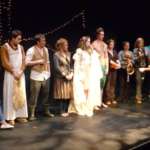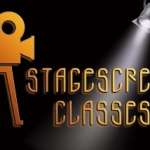The five Latin dances officially recognised by international sporting bodies are Samba, Rumba, Paso Doble, Cha Cha, and Jive. These, and famous improvisations such as salsa, are danced the world over both socially and in competitions.
Latin American dance styles evolved as a fusion of indigenous, European and African dance styles. Dancing played a substantial part in all three component cultures. Through the 17th and 18th centuries, a gradual fusion of the three cultures occurred to produce a new culture: Creole. As European dances were imported into Latin America, they were adopted and ‘creolized’.
The Mambo for example, originated in Haiti and was introduced to the West in 1948 by Prado. The word ‘Mambo’ is the name of a Voodoo priestess in the religion brought from Africa. Thus, the Cha Cha had its origins in the religious ritual dances of West Africa. There are three forms of Mambo: single, double, and triple. The triple has evolved into the Cha Cha. The Cha Cha is danced currently at about 120 beats per minute. The steps are taken on the beats, with a strong hip movement as the knee straightens on the half beats in between. The weight is kept well forward, with forward steps taken toe-flat, and with minimal torso movement.
Salsa is Spanish for ‘sauce’ – and salsa dancing is appropriately enough a heady mixture of tasty movements cherry-picked from a mixture of Latino dances like Bolero, Mambo, Rumba, and the Cha Cha. It incorporates several rhythmic, danceable expression forms that have their roots in the Caribbean. Salsa developed among the Puerto Ricans and Cubans in New York City and spread out in the beginning of the seventies to roughly all Spanish-speaking countries in Latin America – and is a global favourite today.
The unmistakable Son (Spanish for ‘sound’) cubano music is the historical basis from which Salsa music and dance emerged. Synonymous with Cuba, it merged Spanish guitar with African rhythm and percussion. The famous film and ensuing albums by individual members of The Buena Vista Social Club, introduced the world to the Son in its more traditional form. Young Cubans today however, are more likely to swing their hips to the speedier notes of modern Salsa music.
The glitz, glamour and failed celebrity allure of the various dancing shows on TV can make exciting dances such as Salsa seem unattainable and only for the youth and lithe – which is stuff and nonsense. All Latino dances are of the people and for the people, i. e. suitable for people of any age and ability looking to experience the joy of movement.
















